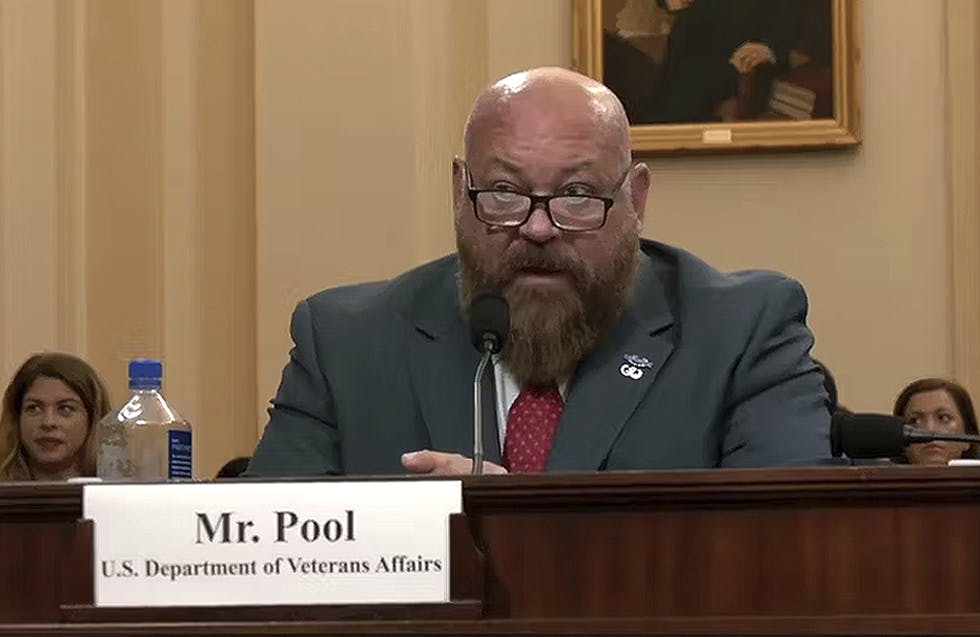How the Navy is Recruiting Top Tech Talent

Data science and artificial intelligence (AI) are key to the future of the armed services, so much so that Congress wrote more than 14 sections dedicated to AI, data science and engineering in the 2022 National Defense Authorization Act (NDAA).
According to Robert Keisler, director of data science and analytics at the Naval Information Warfare Center – Atlantic, the Navy is focusing on three key areas to ramp up data science and AI efforts: people, place of work and product development. People are the top priority.
“People are key, we will win with the talent that we have. We can provide mission and purpose for employees they can’t find anywhere else. Service is also important and engaging for others. We also provide a green field environment because we don’t have a single mission or products that we support,” Kiesler said.
The Navy holds two large annual events to draw AI and data science talent: the Naval Applications of Machine Learning Workshop and the Data Science and Analytics Workshop.
“Both events bring in technologists, scientists engineers and strategic leaders from across the Navy and DOD to discuss problems, challenges and solutions we’ve been able to develop. And bringing people together in these events has been key to increasing the knowledge and capability of the whole Department of the Navy,” Kiesler said.
Hiring from within also helps the Navy grow its AI workforce. Kiesler said they already have talent inside the Navy who are interested in AI and could merge with current AI teams and deepen their AI training.
“We have what we call competency development models,” Kiesler said. “It’s a development track where there is various training that we’ve outlined that we have found is successful. We’re also partnering with groups like JAIC on some of their workforce development initiatives.”
The Navy mainly looks for people who can solve problems creatively. Specialized data science degrees help, but aren’t required, Kiesler said.
“Methodologies on human-centered design — I don’t feel like colleges and universities teach those concepts. How to work with a customer and translate their problem into a solution,” Kiesler said. “Concepts are more key than the actual technology. Really understanding how to answer the problem without going straight to a technical, mathematical or engineering solution is best.”
The Navy uses all types of training to prepare its workforce. Kiesler and others have developed a “data 101” course to teach data analytics and AI concepts.
“We also utilize vendor-delivered training on general concepts and specific tools,” he added. “University training is becoming more of a thing and the naval education group which includes the naval post graduate school, the technology college and the academy. They’ve gotten really involved in the AI and data arena.”
The Navy is also focused on improving digital literacy across its workforce to improve mission outcomes.
“Digital literacy, which includes AI and data, are key components and pillars of the thrust of we’re trying to get at. That’s literacy at all levels.” Kiesler said. “Not just technical people, those who are building the solutions, but also the people who are using them. Literacy is key and will continue to be driven both in the Navy and DOD.”
This is a carousel with manually rotating slides. Use Next and Previous buttons to navigate or jump to a slide with the slide dots
-

VA CIO Targets Modern IT and Smarter Workforce Alignment
Agency leaders told lawmakers they are focused on trimming legacy systems and restructuring its workforce to streamline operations.
3m read -

Pentagon's $200M AI Contracts Signal Broader Effort to Transform Talent
The Army is leveraging Silicon Valley, reservist programs and new hiring strategies to integrate critical digital skills in its ranks.
5m read -

AI Foundations Driving Government Efficiency
Federal agencies are modernizing systems, managing risk and building trust to scale responsible AI and drive government efficiency.
43m watch -

Inside DOD’s Push to Grow the Cyber Workforce Through Academia
Diba Hadi gives her first interview since becoming principal director of the DOD’s Cyber Academic Engagement Office.
15m listen -

Agencies Tackle Infrastructure Challenges to Drive AI Adoption
Federal agencies are rethinking data strategies and IT modernization to drive mission impact and operational efficiency as new presidential directives guide next steps.
5m read Partner Content -

Generative AI Demands Federal Workforce Readiness, Officials Say
NASA and DOI outline new generative AI use cases and stress that successful AI adoption depends on strong change management.
6m read -

The Next AI Wave Requires Stronger Cyber Defenses, Data Management
IT officials warn of new vulnerabilities posed by AI as agencies continue to leverage the tech to boost operational efficiency.
5m read -

Federal CIOs Push for ROI-Focused Modernization to Advance Mission Goals
CIOs focus on return on investment, data governance and application modernization to drive mission outcomes as agencies adopt new tech tools.
4m read -

Fed Efficiency Drive Includes Code-Sharing Law, Metahumans
By reusing existing code instead of rewriting it, agencies could dramatically cut costs under the soon-to-be-enacted SHARE IT Act.
5m read -

Agencies Push Data-Driven Acquisition Reforms to Boost Efficiency
New initiatives aim to increase visibility of agency spending, improve data quality and create avenues to deploy solutions across government.
5m read -

Data Transparency Essential to Government Reform, Rep. Sessions Says
Co-Chair of the Congressional DOGE Caucus Rep. Pete Sessions calls for data sharing and partnerships to reduce waste and improve efficiency.
5m read -

DOD Turns to Skills-Based Hiring to Build Next-Gen Cyber Workforce
Mark Gorak discusses DOD’s efforts to build a diverse cyber workforce, including skills-based hiring and partnerships with over 480 schools.
20m listen
















